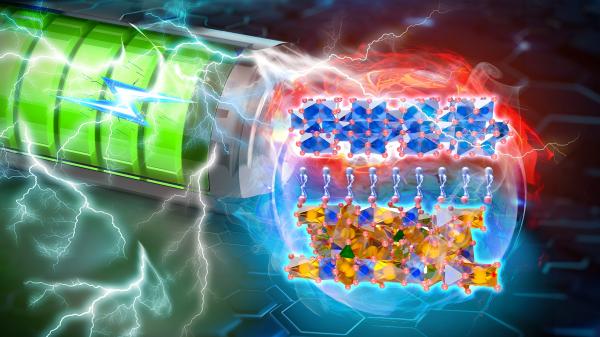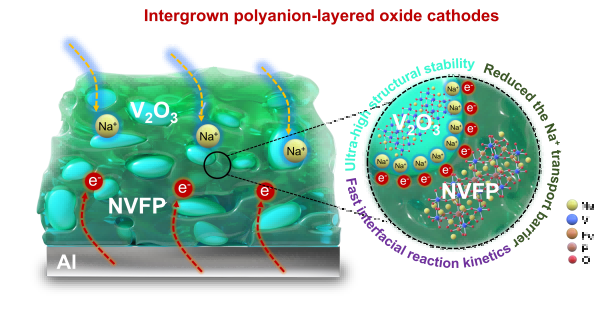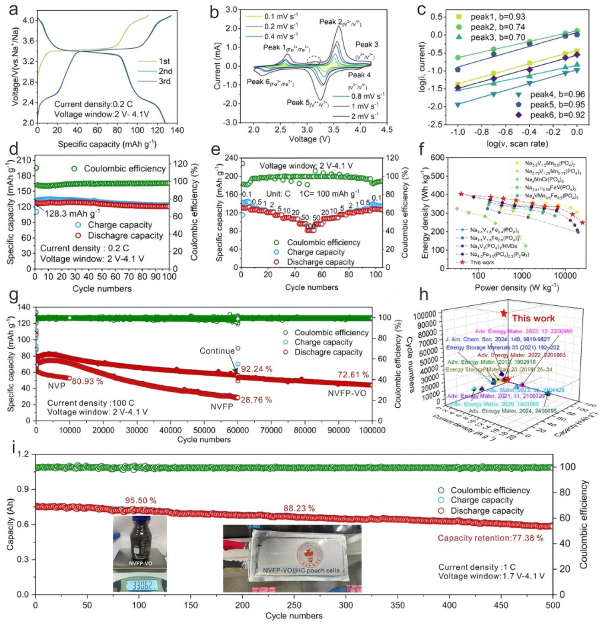With the global push toward carbon neutrality, the development of electrochemical energy storage has accelerated. Advancing sodium-ion battery (SIBs) technology holds strategic significance for China by reducing dependence on lithium resources. SIBs offer distinct advantages in terms of low-temperature performance, safety, and cost reduction potential. Their unique characteristics and market potential have positioned them as one of the most promising next-generation energy storage technologies, poised for rapid industrial growth.

Chair Professor Tian Shou Zhao from the Department of Mechanical and Energy Engineering at the Southern University of Science and Technology (SUSTech) led a research team, including Associate Researcher Meisheng Han and Associate Professor Lin Zeng, to develop an integrated polyanion-layered oxide composite cathode for SIBs, achieving an unprecedented 100,000-cycle lifespan.
Their findings were published in Energy & Environmental Science under the title “Integrated polyanion-layered oxide cathodes enabling 100,000 cycle life for sodium-ion batteries”.
In this study, the research team designed a polyanion-layered oxide composite cathode embedded within a porous carbon framework. This cathode consists of a sodium-rich polyanionic compound (NVFP) and a layered oxide (VO), forming an in situ coexisting biphasic heterostructure that significantly enhances sodium storage performance after optimization (Figure 1).

Figure 1. Schematic illustration of the biphasic composite cathode structure
The introduction of iron doping reduces the bandgap of sodium vanadium phosphate (NVP) and activates the V??/V?? redox couple, thereby improving conductivity and specific capacity. The porous carbon skeleton further enhances electronic conductivity while effectively buffering volume changes during cycling. The heterostructure lowers ion transport barriers and accelerates reaction kinetics. Additionally, the low-strain VO phase acts as a stabilizer, mitigating volume expansion and stress gradients within NVFP, while the spontaneous activation mechanism of VO further boosts the capacity.
As a result of these synergistic effects, the cathode delivers a high reversible capacity exceeding 130 mAh g?1 at 0.1C. It demonstrates an unprecedented cycle life at a high current density of 100C, retaining 72.6% of its capacity after 100,000 cycles—representing the longest cycle life ever reported for a polyanion-based cathode material. Moreover, Ah-level pouch cells based on this cathode exhibit a high energy density of 153.4 Wh kg?1 and over 500 cycles of stable operation (Figure 2).

Figure 2. Electrochemical performance of the biphasic composite cathode
This study bridges the two major categories of sodium-ion battery cathodes—polyanionic and layered oxide materials—demonstrating that the synergistic effects within integrated cathodes can drive the development of high-energy-density, fast-charging, and long-lifespan cathodes. It expands the compositional space for future cathode research and highlights the broad application potential of cost-effective, long-cycle-life sodium-ion batteries for large-scale, long-duration energy storage systems.
Master’s student Zhiyu Zou and Ph.D. student Yongbiao Mu from the Department of Mechanical and Energy Engineering are the co-first authors of the paper. Chair Professor Tian Shou Zhao, Associate Researcher Meisheng Han, and Associate Professor Lin Zeng are the corresponding authors. SUSTech is the lead corresponding institution.
Paper link: https://doi.org/10.1039/D4EE05110F